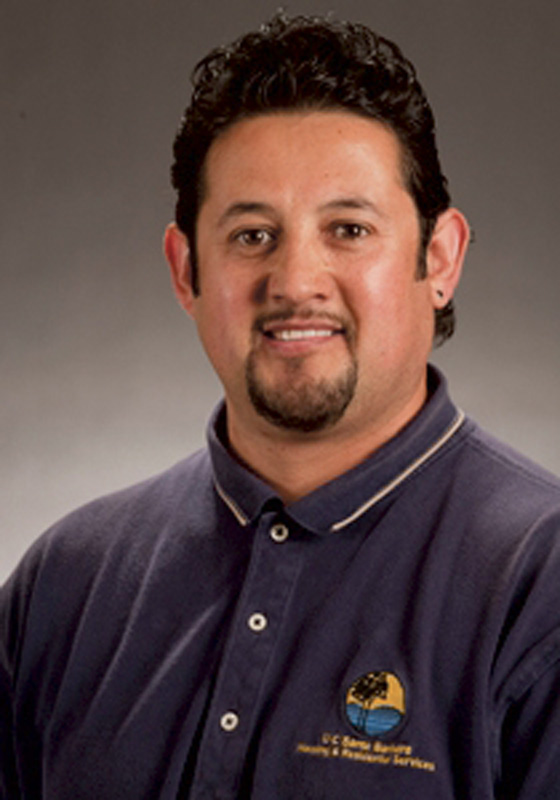Kyle Roe
Copy Editor
The Main Lounge at San Nicolas Residence Hall became a little more vibrant last Friday when the artwork of Senior Custodian Juan Marquez was showcased there from 2 – 5:30 p.m. When the exhibition opened, the room was packed with attendees eager to view the fruits of Marquez’s talent, adding a new dimension to a familiar face around San Nic. After the first hour, turnout narrowed to a trickle, allowing family members, friends and organizers to slide in and offer their congratulations to Marquez in a quieter manner.
Eight paintings were displayed at the show, arranged to enclose visitors in a circular viewing space with a computer playing “Spanish Guitar” radio on Pandora heading one end and a table with cheese, crackers and refreshments heading the other. The artworks were separated aesthetically. Paintings that were more avant-garde and surreal, with sharp edges and pained subjects, stood on the left, while lush paintings with thicker brush strokes adorned the right side.
The first piece visible when visitors walked in the room was a painting called Encerrado, which translates to “tied up” in English. The painting depicts a red figure in the fetal position who “has no face, because it could be anybody. It could be me, it could be you,” according to Marquez. It represents a person who is, “closed in himself, and who’s afraid to express himself, to show his emotions or show his struggles.” Marquez has felt these encumbering emotions in the past, and considers them part of the human experience. “We pretend that we are fine to the world, but deep inside, we feel like this one. Encerrado.”
Marquez is completely self-taught and started drawing at a very young age. Inspired by artwork he saw attending church, he became serious about painting when “one day…I looked at a painting and thought ‘I can do this myself,’” describing it as a self-affirming decision. After creating a few paintings to his liking, he never turned back.
A monumental influence of Marquez’s is Ecuadorian painter and sculptor Oswaldo Guayasamín. Three of the showcased paintings, Grito al Viento, Dos Personas un Mismo Ser and El Clamor, are renditions of Guayasamín originals with Marquez’s own personal touch. Central markers of Guayasamín’s style, including the prominent display of hands and his distinctive style of caricature, remained.
Marquez’s rendering of El Clamor was especially powerful. It depicted a subject with a downcast face, colored in yellow and orange hues, staring pleadingly forward with hands clasped together in prayer in the foreground. Marquez said that the person in the painting represented people living in the mountains of Ecuador who “are struggling for food, and water, and a lot of necessities.” El Clamor, in this case, translates into “the prayer”; no ordinary prayer, according to Marquez, but a “real prayer, one that you make when you are suffering.” Though Marquez is not sure what the original painting meant for Guayasamín, that is what the original represented to him and what he tried to convey in his reproduction.
Before his employment at San Nicolas, Marquez ran a T-shirt printing company, which he founded in 1994, where he would design logos for various companies and businesses. This allowed Marquez a niche within the corporate world where he was free to express his creativity by creating images that “would represent the companies … I want them to be proud of what they’re wearing. I was trying to make it like I would wear it myself.” He later quit his printing job to open a gallery that specialized in painting and pottery, but “the economy dropped so much that I had to let it go.”
Marquez knew that starting a gallery was a risk, especially considering the safety that his printing business provided him. “Everyone told me, ‘Why don’t you expand your existing printing company or [stick to] the business you already know? Why do you take the risk to do something where you have no knowledge at all?’” Marquez recalled. “But you know what? I can tell them to this day that I have no regrets at all. I did what I really wanted to do.”











